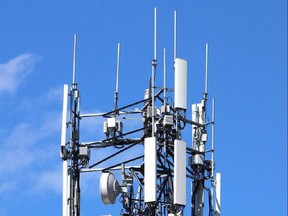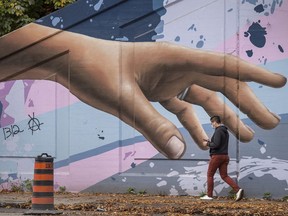Canada’s public health agency admits it tracked 33 million mobile devices during lockdown
The countries most dramatically affected by surveillance and lockdown are the 5 eyes. The monitoring of these countries is for the bigger picture- under planet/climate lockdown. This directly gives power to the Vatican/UN partnership to deal with domestic terrorism.
The Public Health Agency of Canada accessed data such as cell-tower location to monitor people’s activity during lockdown, it said

Article content
The Public Health Agency of Canada accessed location data from 33 million mobile devices to monitor people’s movement during lockdown, the agency revealed this week.
“Due to the urgency of the pandemic, (PHAC) collected and used mobility data, such as cell-tower location data, throughout the COVID-19 response,” a spokesperson told National Post. The program’s existence was first brought to wider attention by Blacklock’s Reporter.
PHAC used the location data to evaluate the effectiveness of public lockdown measures and allow the Agency to “understand possible links between movement of populations within Canada and spread of COVID-19,” the spokesperson said.
In March, the Agency awarded a contract to the Telus Data For Good program to provide “de-identified and aggregated data” of movement trends in Canada. The contract expired in October, and PHAC no longer has access to the location data, the spokesperson said.
The Agency is planning to track population movement for roughly the next five years, including to address other public health issues, such as “other infectious diseases, chronic disease prevention and mental health,” the spokesperson added.
Privacy advocates raised concerns to the National Post about the long-term implications of the program.
“I think that the Canadian public will find out about many other such unauthorized surveillance initiatives before the pandemic is over—and afterwards,” David Lyon, author of Pandemic Surveillance and former director of the Surveillance Studies Centre at Queen’s University, said in an email.
Lyon warned that PHAC “uses the same kinds of ‘reassuring’ language as national security agencies use, for instance not mentioning possibilities for re-identifying data that has been ‘de-identified.’”
“In principle, of course, cell data can be used for tracking.”
Mobility data analysis “helps to advance public health objectives,” the PHAC spokesperson said. The findings have been regularly shared with provinces and territories via the special advisory committee to “inform public health messaging, planning and policy development,” the spokesperson said.
The data is also used for the COVID Trends portal, a dashboard that provides a summarized data of movement trends.
Lyon urged a need for greater information “regarding exactly what was done, what was achieved and whether or not it truly served the interests of Canadian citizens.”

Deploying surveillance tools for public health purposes also raises to the issue of equity, Martin French, an associate professor of Concordia University focusing on surveillance, privacy and social justice, noted in an email.
“There are populations that could experience an intensification of tracking that could have harmful (rather than beneficial) repercussions.”
Increased use of surveillance technology during the COVID-19 pandemic has created a new normal in the name of security, Lyon said.
“The pandemic has created opportunities for a massive surveillance surge on many levels—not only for public health, but also for monitoring those working, shopping and learning from home.”
“Evidence is coming in from many sources, from countries around the world, that what was seen as a huge surveillance surge—post 9/11—is now completely upstaged by pandemic surveillance,” he added.
PHAC’s privacy management division conducted an assessment and “determined that since no personal information is being acquired through this contract, there are no concerns under the Privacy Act,” the spokesperson said.
The Office of the Privacy Commissioner said it is “following up with PHAC to obtain more information about the proposed initiative” and could not provide additional comment at this time.